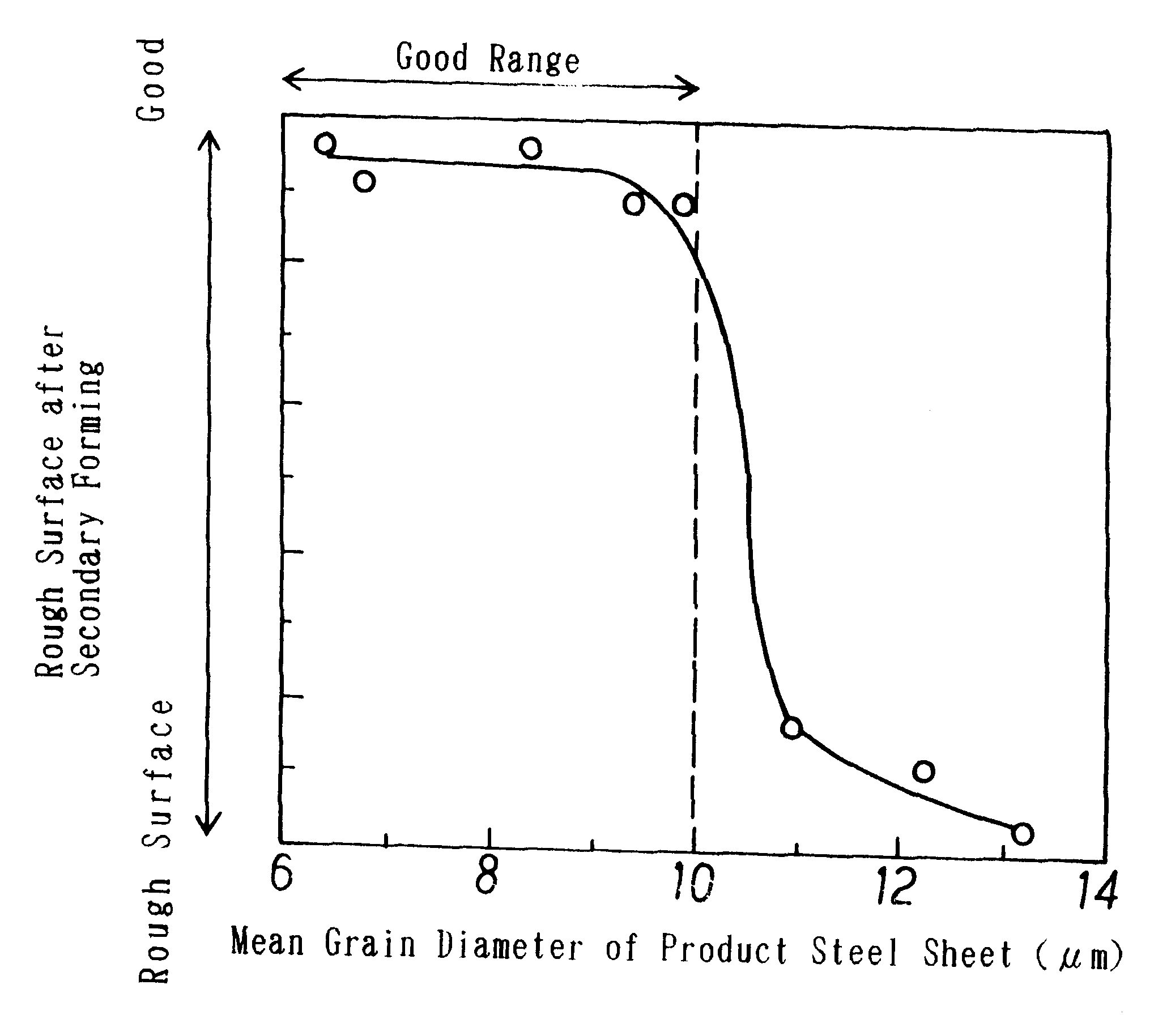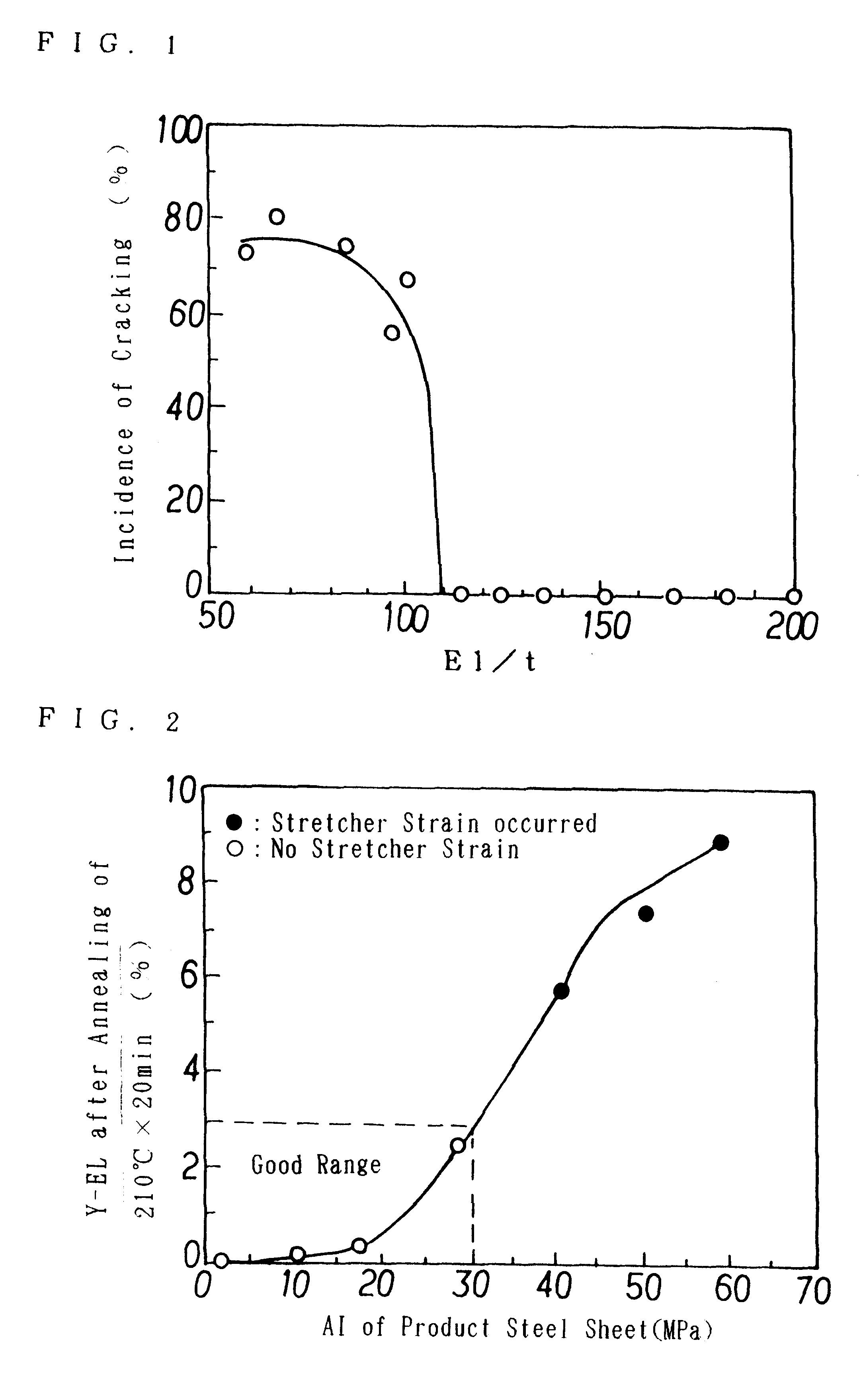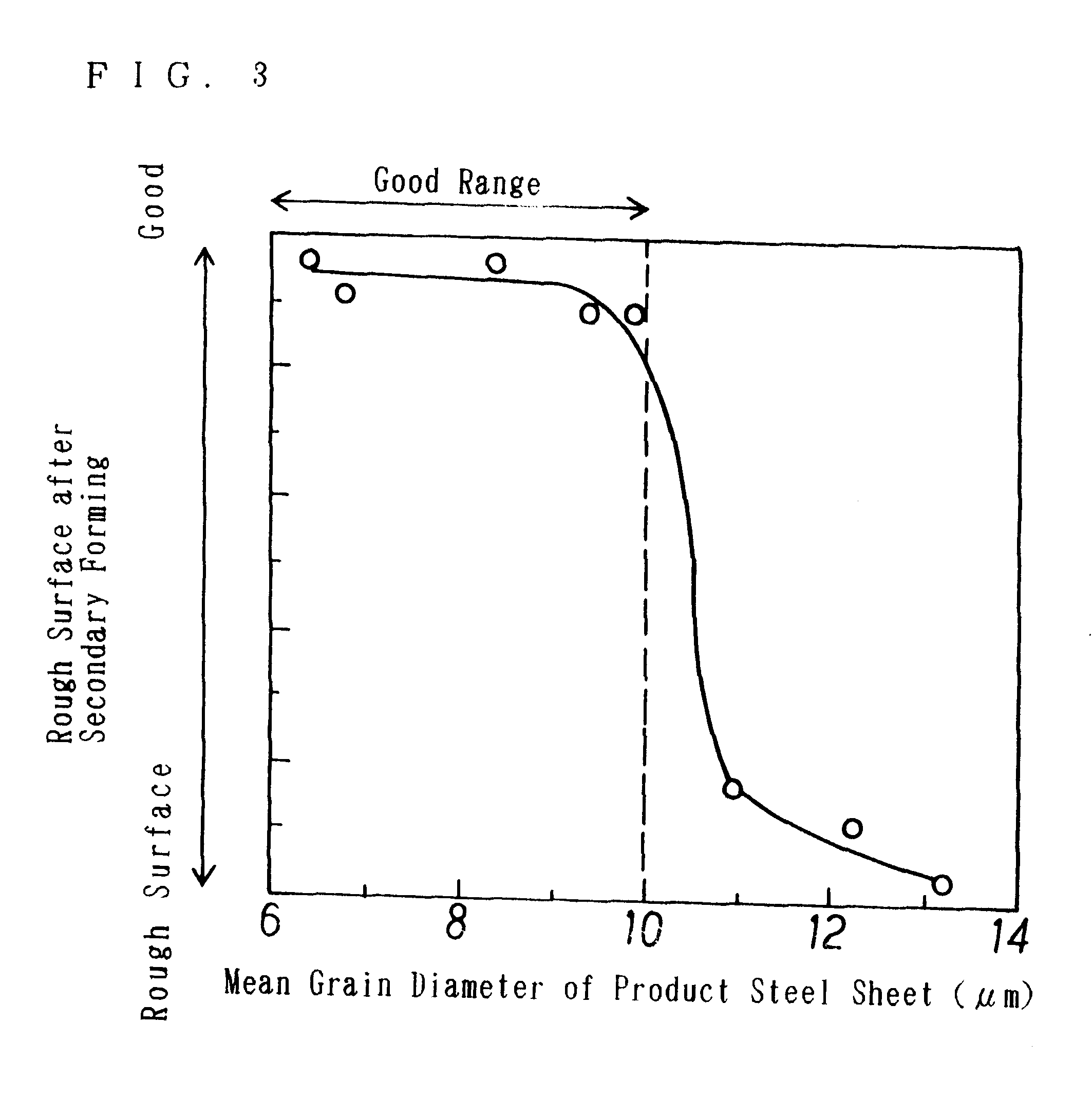Steel sheet for can and manufacturing method thereof
a technology of steel sheets and cans, applied in the direction of manufacturing tools, furnaces, heat treatment equipment, etc., can solve the problems of deterioration of weldability, increased springback, and hardly guaranteed yield of finished products or materials, and achieve excellent secondary forming properties and reduce canmaking costs
- Summary
- Abstract
- Description
- Claims
- Application Information
AI Technical Summary
Benefits of technology
Problems solved by technology
Method used
Image
Examples
example 1
A series of steels having chemical compositions shown in Table 1 were prepared by steel making in a converter and subjected to continuous casting to give slabs. These slabs were subjected to hot-rolling, cold-rolling, continuous annealing, and secondary cold-rolling under conditions shown in Table 2 to give cold-rolled steel sheets of 0.22 mm in finishing delivery thickness. Subsequently, the steels were subjected to continuous tin plating corresponding to #25 in a tin electroplating line of halogen type to give tinplates.
Test pieces were sampled from the rolling direction (L direction) and the cross direction (C direction) of thus obtained tin-plated steel sheets, and subjected to tests of total elongation EL, surface hardness HR30T, r-value, AI value and elongation at yield point (Y-EL) after an aging treatment corresponding to baking (210.degree. C..times.20 min), and the ratio of total elongation EL / t. In these tests, tensile test pieces of JIS No. 5 were used.
These steel sheets...
example 2
A series of cold-rolled steel sheets of 0.22 mm in finishing thickness were obtained by using a steel No. E shown in Table 1 and subjecting it to hot-rolling, cold-rolling, continues annealing, and secondary cold-rolling under manufacturing conditions shown in Table 4.
Subsequently, the steel sheets were subjected to continuous tin plating corresponding to #25 in a tin electroplating line of halogen type to give tinplates. Similar analyses to Example 1 were conducted on these product steel sheets. Table 5 demonstrates the results of the analyses. In this connection, as the hot-rolling, a rolling of pair cross type was conducted using a rolling mill having pair cross rolls at all stands, except under a manufacturing condition No. 2-13. As the cold-rolling, a rolling with concurrent use of cross-roll-type and shift roll type rolling using a rolling mill having roll-cross-type stands in the former stage was carried out, and crowns of cold-rolled steel sheets were controlled, except unde...
example 3
After taking out from a converter, a molten steel (300 ton) was subjected to decarburization using an RH vacuum degassing apparatus to control its composition to C=0.014 wt %, Si=0.01 wt %, Mn=0.25 wt %, P=0.010 wt %, S=0.005-0.009 wt % and to adjust the temperature of molten steel to a range from 1585 to 1615.degree. C. To this molten steel was added 0.2 to 0.8 kg / ton of Al to conduct preliminary deoxidation for 3 to 4 minutes to reduce the dissolved oxygen concentration in the molted steel to a range from 55 to 260 ppm. In this step, the Al concentration in the molten steel was 0.001 to 0.005 wt %. Then, to this molten steel was added 0.8 to 1.8 kg / ton of a 70 wt % Ti--Fe alloy to conduct Ti-deoxidation over 8 to 9 minutes. After adjusting the composition, a treatment was then carried out by adding to the molten steel a 30 wt % Ca-60 wt % Si alloy, or an additive obtained by adding metallic Ca, Fe, 5 to 15 wt % REM to the alloy, or an Fe-coated wire of 90 wt % Ca-5 wt % Ni alloy o...
PUM
| Property | Measurement | Unit |
|---|---|---|
| Temperature | aaaaa | aaaaa |
| Temperature | aaaaa | aaaaa |
| Temperature | aaaaa | aaaaa |
Abstract
Description
Claims
Application Information
 Login to View More
Login to View More - R&D
- Intellectual Property
- Life Sciences
- Materials
- Tech Scout
- Unparalleled Data Quality
- Higher Quality Content
- 60% Fewer Hallucinations
Browse by: Latest US Patents, China's latest patents, Technical Efficacy Thesaurus, Application Domain, Technology Topic, Popular Technical Reports.
© 2025 PatSnap. All rights reserved.Legal|Privacy policy|Modern Slavery Act Transparency Statement|Sitemap|About US| Contact US: help@patsnap.com



